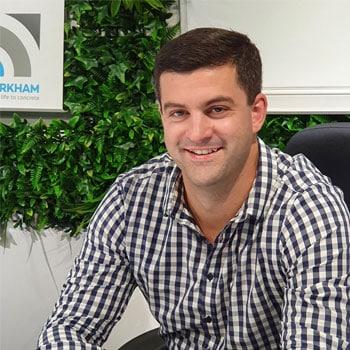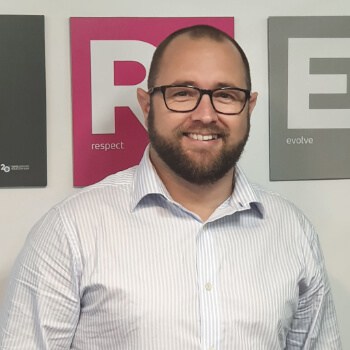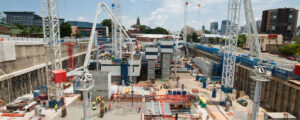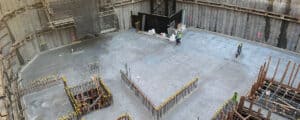FLOOR-TECT™ - What is it? and Why?
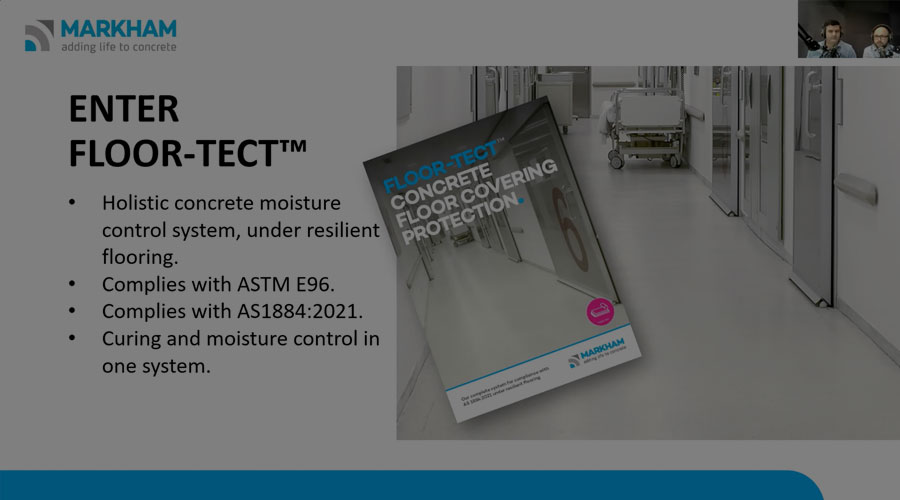
FLOOR-TECT® – What is it? and Why?
Webinar Show Notes
FLOOR-TECT® – markhamglobal.com/markham-products/complete-systems/floor-tect-concrete-floor-covering-protection
Download the brochure – markhamglobal.com/markham-videos/floor-tect-concrete-floor-covering-protection
AS1884:2021 – standards.org.au/standards-catalogue/sa-snz/building/pl-015/as–1884-colon-2021
Learning Outcomes
- Concrete moisture issues under resilient flooring
- AS1884:2021
- End-to-end approach and performance-based warranties
WADE: Welcome everyone, we’ll just wait a couple of minutes. We’ve got a few people still joining in. You may see Brad and I have got a flash new setup for this, so we’re looking forward to using it! OK, so today, thanks for joining us. This is the launch of our FLOOR-TECT system. So today we’re going to go through what it is, why we’ve introduced it, and how that works through the construction process; how to specify it; that type of thing. We’re going to go through all that through there.
A few quick housekeepings. I’m Wade Lanham. This is Bradley Fulcher.
BRAD: How are you going, everyone? Good to see you!
WADE: We’re from the Sydney office at MARKHAM. We’ve both been around for MARKHAM for about four years now. So we’ve been dealing with these sort of situations in construction for quite a long time now, understand them really well.
Towards the end, we’re going to do Questions and Answers. So while we’re running through this presentation, if you could smash through all your questions, that type of thing, while we’re going along. We’ll answer them at the end. Even if we do end up covering that off throughout the process, don’t wait for it. Make sure you put that in as soon as you think of it, and then we’ll make sure we cover it. I don’t mind rehashing a few things as we go through.
So what we’re going to do just to make sure that we direct this down the path that suits you guys, we just want to get a little bit of an understanding about your background; whether you’ve dealt with flooring issues before; you’re In design; you’ll see all the options here. We’ll leave this up for about 30 seconds or so. And then what we’ll do, we’ll try and tailor this towards your aspect of the build and how we can help you out.
BRAD: Just while we’re on that, just for your questions: there’s a little button down the bottom that says Q&A. Just pop them in there. That would be great. Thank you.
WADE: All right, let’s have a look at the results. We’ve got a good even spread today. Architects, flooring professionals. Building construction professionals. All right, perfect. OK, well that’s actually quite good. We’ll cover quite a broad range here then, that sounds great. So let’s get into it.
So what we’re going to go through is concrete moisture issues under flooring. This is something that MARKHAM has been involved with for 20 plus years now, and so we’ve got a huge amount of experience in this in this sort of situation. We’re going to go through the changes in AS1884, the 2021 update. There are some changes to the flooring standards that need to be addressed, and this is going to be how we address them. And then we’re going to go through our end-to-end approach and our performance-based warranties. This is what really sets us apart from the others out there. We’ve got similar systems to meet these standards.
So I’m going to go through a little bit about what happens in the concrete in the construction phase. So, when concrete is poured, it’s wet, it takes around a month to get about an inch of dryness. So if you’re talking about a concrete slab that doesn’t get wet through the duration of the construction period, you’re looking… If it’s a 150mm thick slab, that’s going to take about six months for that concrete to get dry enough to be able to put flooring on. Now, in most cases this is OK. You have enough time with that, but it’s from the last time it’s wet, so particularly with the weather we’ve had in Sydney here, and most of the East Coast of Australia suffered at the moment this doesn’t usually have enough time to dry out, and there’s a lot of moisture in the air that sticks around as well.
So it makes putting flooring down really, really, really hard. So this moisture doesn’t allow the glue to dry. You can get condensation under the flooring; it creates a lot of issues. So we need to come up with a way that we can make this fast and effective.
Now, with AQURON-treated floors, which a lot of people have had a lot of experience with, it locks the moisture into the concrete so the moisture can’t escape. It still keeps it in there, but it can’t travel, so you can actually lay flooring after just 28 days of freshly poured concrete if it’s treated with AQURON at the time of concrete pour. We can save a huge amount of time off the construction period. Brad, do you want to go through a few of the issues that flooring has with moisture?
BRAD: Thanks Wade, thanks for the intro and up to now. Yes, as Wade said, there’s some moisture in concrete, and moisture can move through concrete. There are a few different reasons why we don’t want this to happen. One of the reasons we are focusing on today is obviously with our FLOOR-TECT system and also the resilient flooring. Resilient flooring, as you’ll be well aware, it’s things like vinyls and other floor coverings that go on top of the floors at the back end of a build.
Once we put these floors down, we obviously don’t want any moisture coming up through the slab at that point. So what typically happens if moisture is in the slab at this stage and can move freely through the slab – once that … In this case, we’ll go with the vinyl, say you put a vinyl plank down. The moisture underneath actually starts sweating with that heat that’s generated from having a topping on it, and it’ll bring it to the surface, and that moisture will start breaking down those glues. And in time, this can actually cause those glues to lose their bond, and then you have bubbling appearing, such as in this picture here.
Obviously, that’s a worst case scenario. But in that case, those floorings have to be removed and the slab has to be re-prepped; and the moisture issue dealt with, and then the flooring re-laid. At this stage, it’s very costly, a costly exercise. There’s a lot of cost and also time, not to mention damage to your name and your professionalism as well. So by dealing with that moisture as soon as possible and any of those damaging effects that can happen later – getting that rid of that as soon as you can in your construction processes is obviously the best way to do it.
We’re just going a little bit on that standard that covers this. Obviously, with the moisture in the concrete, there’s obviously a standard for this. And as Wade briefly touched on, that’s the AS1884 standard, recently updated back end of 2021.
And so there are a few little changes to this, which is one of the reasons we’ve brought our FLOOR-TECT systems to make sure that it still complies with these latest updates. Obviously, these updates are important for the industry, to make sure everyone is on board with the best practices out there and the best ways of doing things. As you would be aware, the standard covers pretty much everything there with floor laying. So not only the type of products you’re using – right through for moisture barriers and glues etc. Also installation practices and things like that, so it’s a pretty comprehensive guide.
The thing we want to focus on, or the thing that’s changed the way we’re approaching moisture barriers, is the latest edition, which includes an ASTM E96 test for water vapour transmission. So this is a test that they’ve put forward to use to measure the amount of moisture coming out of the slab. So that sounds pretty simple: you test the amount of moisture coming out of the slab, then obviously you can know whether you need a moisture barrier or not. And so that’s just a brief overview of that. I’ll hand it back to you, Wade.
WADE: Thanks, Brad. I’ll introduce you to our system. So again, we’ve been looking after moisture control in concrete and under flooring for quite a substantial amount of time, with a huge, huge success rate, so we didn’t want to change too much from our regular systems that we’d put in place, because we know they work so well.
The difference in this system is that ASTM E96 test requires you to actually have a physical barrier on the top of the concrete, whereas all our other systems are in an internal barrier. So we had to adjust it slightly. We’re still using our original moisture control barriers, so that hasn’t changed. We already know that that works. FLOOR-TECT just adds an additional layer on top of the concrete that’s compliant to the ASTM E96, just to make sure we hit that new 2021 update of the flooring standard.
So all our traditional systems are still what they were before. Where our FLOOR-TECT system differs: we actually have our first part of the system go down at the time of concrete pour; so that cures and moisture control your concrete from day one. And then before flooring, we have another layer that comes through and that’s for your E96 protection. So it’s a two-part system which still gets you a huge amount of benefits throughout the build by almost being a two-part process where sometimes that could be 4-5 times; when you’re looking at moisture controls and barriers and curing and sealing and those type of things as separate parts of the build.
The other difference between what we do and what a lot of other people do is our end-to-end service. We work right from the design stage, all the way through to install, and we all work really closely together throughout the process, so we have a team that deal with architects, asset owners, designers, engineers; who look after making sure that these TECT systems are the correct system for your project; as well as the other bits and pieces that we do.
It then goes throughout … the project might go out to tender. We touch base with the estimators so they understand where they can and can’t allow for different costings and different procedures; we make sure that they’re not doubling up in their costs, the initial costs. It then goes through to the award, where we again follow up with the builder who’s been awarded it… Make sure they understand the system and why we’re doing it.
And then it’s actually our own staff who go out on-site and install these systems. So the whole way through, it’s been MARKHAM looking after the whole process. It’s very, very, very big for quality control; and it means the people that are installing the product on site have a direct relationship with the people who are into the design team; so it runs the whole way through.
If there’s a certain, I guess, performance value that the design is trying to achieve, we can make sure that that’s achieved at a site level. And I don’t think anyone on the planet does that. It all seems to be manufacturers, installers, and quite often this is where things go wrong. If something does go wrong too; everyone likes to point fingers… as in, The product’s no good. I installed it as per what I was told! … and it goes round and round in circles and nothing gets resolved.
So we actually have a full performance-based warranty. And what that means is, instead of it just being a product or a manufacturer warranty, or an installer warranty, we actually cover the whole process involved with that. Brad will run you through this now.
BRAD: Yes, thanks wade. Thanks for pointing those factors out. Just before I do, just a quick reminder to keep those questions coming through. And it’s great to see them popping up.
Yes, so the performance-based warranty. So this is a really big part of MARKHAM as a company, but obviously also this FLOOR-TECT system. All our systems, all our services in MARKHAM, have a performance-based warranty. So the difference, as Wade was pointing out, is that this is not a product warranty. So if there’s a failure, if there is an issue, we don’t just replace the cost of the product and then wave you out the door. We are offering a performance-based solution, so therefore it’s a performance-based warranty. Big points on this: obviously it’s an insurance-backed warranty. In the case of flooring failure, we’re talking about replacing the flooring, making sure the slab’s being re-treated, etc, and so you get back to where you were before you had an issue.
But the main thing for us obviously is that these issues don’t occur in the first place. The reason we can offer this performance-based warranty is because, as Wade was saying, we’re not just a product supplier, we’re the installer and we do all our own QA, and also design work as Wade was mentioning.
It’s a big, big part of our system. We’ve been doing warranty-based solutions for over 25 years, and for us, really, it’s the way forward; and we’re seeing a lot more need for it really, in the industry, that people are standing behind their products and services and being able to back what they’re doing.
So that wraps up our presentation today on the FLOOR-TECT system. We’re also going to run through the questions now. Keep firing them through as you think of them. If you do have any more project-based questions or ones that you don’t want to be aired on such a public forum, feel free to flip them through to those email addresses you saw pop up. And these are also available on our website, so you can have a look on there as well for further information.
We’ll just get these questions up. Well, Wade, do you want to kick off this first one?
WADE: Yes, I’ll kick us off. The first question is, How long is the warranty period? For these systems, we start warranties at 15 years. Because what we’re doing is a permanent solution, if they need to be longer, generally we can be flexible, we just need to be kept in the loop with that. So yes, I’ll loop that through to the next question as well.
Tell us more about AQURON 2000, which was mentioned in the earlier slides. AQURON 2000 is the product that we’ve been using for moisture control for basically the whole of MARKHAM’s existence. It’s a penetrative colloidal silica, so usually, it’s applied at the time of concrete pour. It penetrates down into the concrete and locks the moisture in. So that’s the keyword there. It locks the moisture in, so that helps the concrete cure, which helps you get good concrete to start with and it locks that moisture in so it can’t travel anywhere. It’ll also stop future moisture from being able to penetrate into the concrete as well, so it really is a multi-sided solution there. So that’s the basis of this FLOOR-TECT system.
BRAD: Yes, some great points there, Wade. Another thing to also mention that which we probably haven’t covered is that the FLOOR-TECT system can also be retrofitted. We have talked about applying at the cure stage with part one, and then part two going down before floor laying. We can also retrofit the system to existing slabs and older slabs that have a need for a moisture barrier.
Another one of the questions that have come through is, How is this system applied? So just real briefly on this. Obviously, every project is slightly different, but in a typical construction build, we’re looking at spray applying the first part of the system which is AQURON 2000, at the curing stage. So this is generally done in a couple of wet-on-wet passes straight after the concrete pour. A typical slab around you 500 to 1000 m2 will take 3 or so hours. And then the second part of the system is done just before the floor laying part of the process is done. So this is after they’ve done their final floor prep; and once again it’s a spray-applied solution as well, going down at that stage. Anything to add on that, Wade?
WADE: No, I think I think you covered that really well. The whole system relies on us having really good integration throughout the whole project, with all contractors from the actual build to the flooring contractor, the concreting contractor, which we all look after. It’s another unique thing that we do is we’re very, very integrated into a project; we’re really all hands on deck. We would generally work with the builder to find out who these other involved people are, and we all work alongside each other quite well through the build. So you really do get a nice seamless process throughout the whole build with this as well.
Yes, again it falls back to people blaming other people’s work for theirs not being at the top level of performance. We make sure that everyone is on par the whole way through the build, make sure it’s all going the way it should.
BRAD: Yes, good point. The last question at the moment is, What’s this like an on time with our sites? So I think what the question means is, is this a lengthy process as far as allowing time to get this done? So it’s actually a very time-saving method. The reason being for that is obviously … the first part of the system going down at time of cure – this saves a lot of time. This is your curing compound, your curing agent, so there’s no need for the concreters to do that. We come in and get it done then. So typically we’re talking about the afternoon of the pour, or otherwise first thing in the morning. So this won’t add any extension to your original time programming. We’ll have it done that same day or the next day before… mostly before the guys have got to site. That’s our typical way of doing it.
WADE: Yes, that way they can… The concrete pour happens one day. The next day the site can continue running as per normal. It does save a little bit of money at that back end of the project too. With that second layer coming through… normally that that can be quite a lengthy process. Some of these other products that meet E96 have long drying times between coats, and multiple coats. Our system is actually quite a quick system; so again we can come in there one day, you can actually lay floors on that the next day. So yes, it does save a huge amount of time and money across the build.
BRAD: Yes, correct. One thing to keep in mind is often when the flooring contractors get to a site, a site that we haven’t been on, the first thing they do is take a moisture reading and then if the moisture levels are too high they have to stop work. So this can add all sorts of delays to your site. We’re talking, yes, up to a couple of weeks sometimes while they sort out a moisture solution and also sort out a variation as well for that with you guys.
WADE: Yes, good point. And we’ve got another question fired through. Are there any recent projects? Well, we’re actually just launching this system. We’ve sort of had it public for a couple of weeks now. So we haven’t installed any as yet, regarding the full system, because it’s usually quite a few months for a build to go along before we get to that flooring stage. But in terms of moisture control projects under flooring, like aged care, hospitals, we tend to do quite a large range of those throughout the year. Quite a few major hospitals that have been built recently, such as Goulbourn Hospital; Maitland Hospital; Wonthaggi Hospital; Tumut Hospital; Ipswich Hospital up in Queensland, Brad? And then multiple, multiple aged cares. We’d probably do 25 plus aged cares a year, so most of them have been using us for moisture control for quite a few years now.
BRAD: Yes, a very extensive project list and project history over the 25 years of the company, ongoing. Started off in New Zealand; so a lot of project history over there; and then over in Australia as well.
WADE: you going to jump on that next question, Brad? A good one.
BRAD: Yes, so another quick question. Are there any compatibility issues with flooring adhesives? So the short answer is No. I will go into the reasoning behind this though. So both of our FLOOR-TECT system are penetrating products that don’t change the surface of the concrete as such. AQURON 2000 doesn’t leave anything foreign or introduce anything foreign into the concrete. It’s fully compatible with any floor adhesives, and we do offer guarantees on this as well.
WADE: Even for things like under epoxies and that sort of thing, as well. It works quite well.
BRAD: Yes, line-marking paint and those sort of things. No compatibility issues. But one thing we do a lot for peace of mind, though, is write out compatibility statements with the type of glue that the flooring guy is going to use; and we’ve actually got a few over the years, we’ve got a decent size list of the different products etc that have been used, obviously.
WADE: Absolutely. Good question. I always like that one.
BRAD: That wraps up the questions at the moment. Wait, one more just come through then.
WADE: Oh yes, good one, another good one. So the question here is What are the requirements for grinding and surface prep prior to floor toppings? Can a skim coat be installed over this? This is a question we get asked all the time. So our products won’t need to be ground down like a normal curing compound maybe if it’s still present at the back of the project. The only times you would need to grind and surface prep is if you need to get some tack for that glue; so for instance, if that concrete is too smooth or it’s been over-trowelled. Again, this is something that we deal with with the concreters from day one. So generally if we’re getting involved, this avoids this costly variation as well. When you’re doing all this, the AQURON goes down first, which is the best way to do it. Then you can do all your prep, your grinding, a skim coat etc; and then the second part goes down just prior to the actual flooring being laid. So yes, the day before, ideally.
Oh, another one, Brad, you want to jump on the next question?
BRAD: So the next question, Can you provide a system warranty in conjunction with four topping manufacturers? Just trying to get a bit of clarification on the floor toppings, Wade, do you think that’s meaning the glues or more like a skim coat?
WADE: I’d say that’d be skim coating, but it might be floor topping; might actually include the flooring. We’ve got quite a good relationship with quite a lot of flooring contractors, so yes, if there are any projects out there that you’re thinking of using this system and want a good flooring contractor that’s familiar with the way we work and our systems, and has a good track record with … we can definitely tie them in. The system warranty that we provide actually covers quite a lot that the flooring contractor would usually have to cover, so it usually takes a lot of pressure off them, so yes, most of the time they’re really happy to work with us.
So yes, the short answer to that is yes, but we would just have to look into it. Make sure the circumstances are correct. We’re not one to… we won’t agree to something that’s not going to work for anyone.
BRAD: Yes, 100% and as pointed out earlier, we are a project-specific company; so we look at each project on its merits and offer the best solution we can, whether it’s in partnership with other people or stand-alone system, yes.
All right, thank you, everyone, for your time; times up here, at the moment. We look forward to seeing you at next Wednesday’s webinar, and in the meantime, if you’ve got any questions, feel free to reach out!
WADE: See you next time!
More about MARKHAM
MARKHAM are dedicated to providing innovations for concrete and construction. Focusing on concrete waterproofing solutions, penetrating concrete sealers and durability treatments concrete.
Invisible Strength – The media site for MARKHAM – Adding Life to Concrete.
At MARKHAM, we’re on a mission to transform concrete and construction. Our Purpose? ADDING LIFE TO CONCRETE.
From innovative waterproofing solutions to penetrating hardeners and sealers, our focus is clear: to reinforce concrete structures and make them withstand the test of time.
Newsletter
Sign up for email updates on the latest collections, campaigns and videos.
